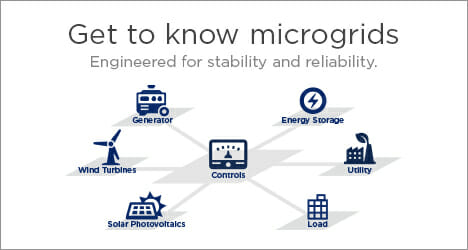Perhaps you’re familiar with a macrogrid—that’s a power grid that serves a large area and combines power generation from an array of large-scale sources. In California, for instance, the macrogrid is operated by the California ISO, and it manages the flow for about 80% the state’s electricity. But a macrogrid isn’t the only kind of grid; there are also microgrids. At Blymyer Engineers, we design microgrids, and see an important role for microgrids in a cleaner energy future.
The U.S. Department of Energy defines a microgrid as “a local energy grid with control capacity, which means it can disconnect from the traditional grid and operate autonomously.” That definition is a great place to start. A microgrid includes power generation, storage, and transmission capabilities that are separate from—or can be disconnected from—the macrogrid.
Who needs a microgrid?
An organization might choose a microgrid for a number of reasons. For instance, an isolated town with an unreliable macrogrid connection might build a microgrid to ensure access to power for residents. A manufacturer who faces high restart costs after a power loss could build a microgrid to support constant operations in the event of power outages affecting the main grid. A community or organization that wanted to ensure that all or most of its power came from renewable sources could make a microgrid part of its strategy.
“There are many advantages of microgrids for some organizations,” says Blymyer President Mike Rantz. “Clean, renewable power from wind and solar sources are often the centerpieces of power generation for microgrids. At Blymer, we’ve delivered the full designs for microgrid systems, including electrical, structural, and architectural design.”
Combining power sources
There is no typical microgrid engineering project—every client has unique needs and a vision for what they want to achieve. Blymyer has participated in projects that combine wind and solar plants as well as cogeneration. With cogeneration, the heat produced by the initial power generation process is either used to provide heat to buildings or processes or it’s used to produce steam for additional electricity generation.
“Designing microgrids is challenging but quite rewarding,” says Blymyer’s Director of Engineering Greg Mazur. “They must be engineered for stability and reliability. We work to engineer systems that deliver the right balance of generation, storage, and cost-efficiency to meet clients’ needs.”

